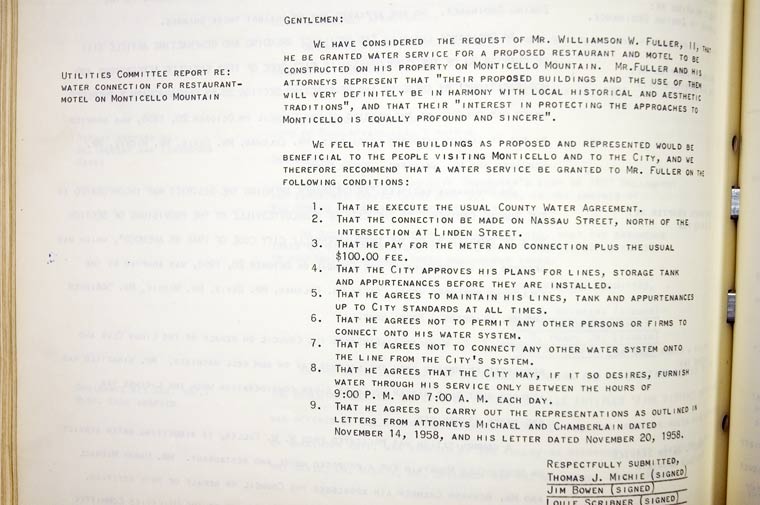Friday, May 22, 2009
Sunday, May 18, 2008
Carpetbaggers?

editorial note... How I wish that there was an analytic, non-celebratory History of Charlottesville. Who might take this on? The University? I'd like to read critical history, ongoing analysis/argument about the Central Virginia region. The post-bellum period, who picked up the pieces? Why? Below, Poindexter mentions the Brennan brothers. Investors? Opportunists?
Another manufacturer who like Knowles was willing to invest in the company but had no time to devote to directing its operations was George S. Harwood. He had come in 1859 from his native England to Massachusetts where he founded the firm of Harwood & Quincy to make woolen machinery. The company soon became a leader in the industry and in 1887, following the retirement of Quincy, its name was changed to George S. Harwood & Company. Harwood died on a trip to Rome in 1894, but his passing meant little to the Charlottesville mill because he had seldom taken an interest in its management.
Lesser figures from the North who put money in the mill were the Brennan brothers. In the early seventies B. H. and Frederick H. Brennan had come from western New York to Charlottesville where they opened a private bank and set up residence. Frederick represented the company on the woolen mill directory until 1884 when the bank failed. Until that time he was the only Northern investor besides Furbush who actively participated in the management of the mill.--Harry Poindexter
Labels: Monticello, Poindexter History
Wednesday, March 26, 2008
no funded debt
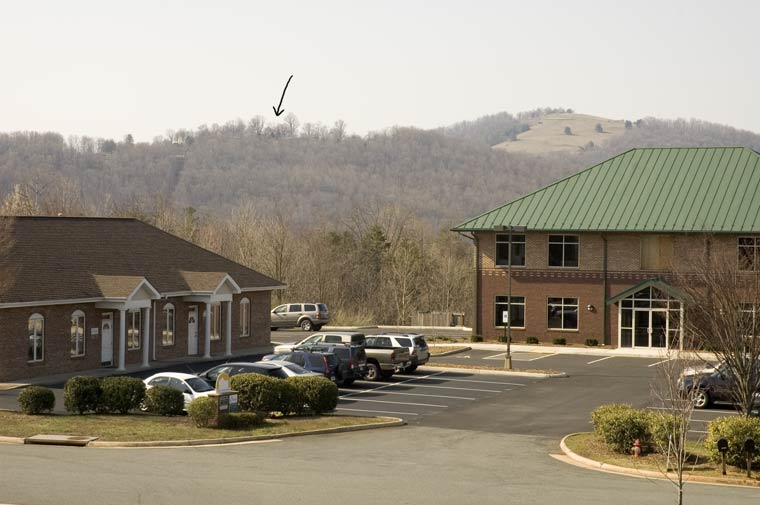
Monticello viewshed (Jefferson's house on the ridgeline)
As early as the fall of 1893, the board of directors were looking for profitable investments in which to use the rapidly accumulating surplus. By the end of the year, $30,000 had gone into municipal and state bonds. This type of investment increased during the following years, and in addition money was lent to several individuals. An investment committee was created in 1894 which began the gradual purchase of mortgage bonds and preferred stock. Both of these had been a constant source of worry for the board. Therefore, at various tines, preferred stock and mortgage bonds were cancelled and destroyed after purchase. By 1904 the company could boast that it had no funded debt.--Harry Poindexter
Labels: Monticello, Poindexter History
Tuesday, March 25, 2008
Returns on common stock
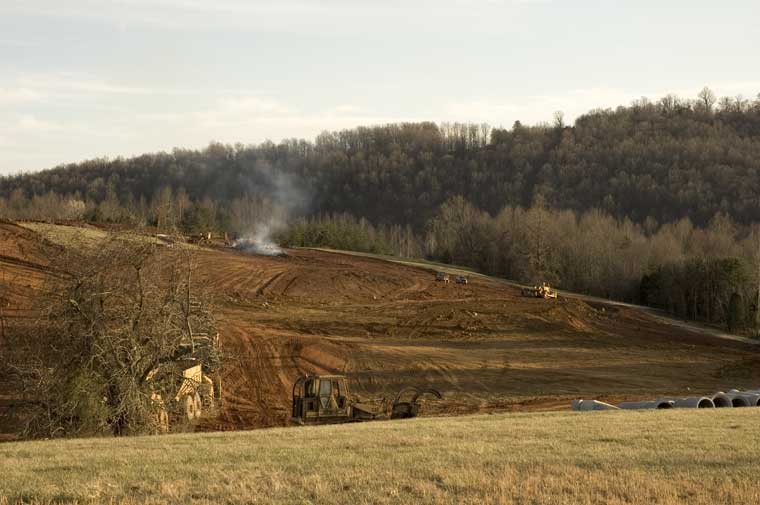
Monticello view-shed being reworked by C.W. Hurt Contractors, L.L.C. (Thomas Jefferson's home is located on the distant ridge line, right hand side of photo beneath the bare poplar limbs)
Returns on common stock reflected this trend after the early heavy losses were made up. From 1890 to 1895 a seven percent common stock dividend was distributed. Thereafter until 1914 earnings on both types of stock varied between twelve and sixteen percent, and in addition the surplus was twice capitalized into common stock.
Another index of the company's health is the scattered information on the growing value of its stock. As early as 1893 preferred stock sold at an eight percent premium; in two years this had doubled. At the end of another decade the premium reached fifty percent: the stock which had sold for fifty dollars in 1884 now brought seventy-five dollars at a public sale and eighty dollars in a private transaction. By 1913, some of the stock of the company had exchanged hands at $110 a share.--Harry Poindexter
Labels: Monticello, Poindexter History
Thursday, December 6, 2007
achievements of the community
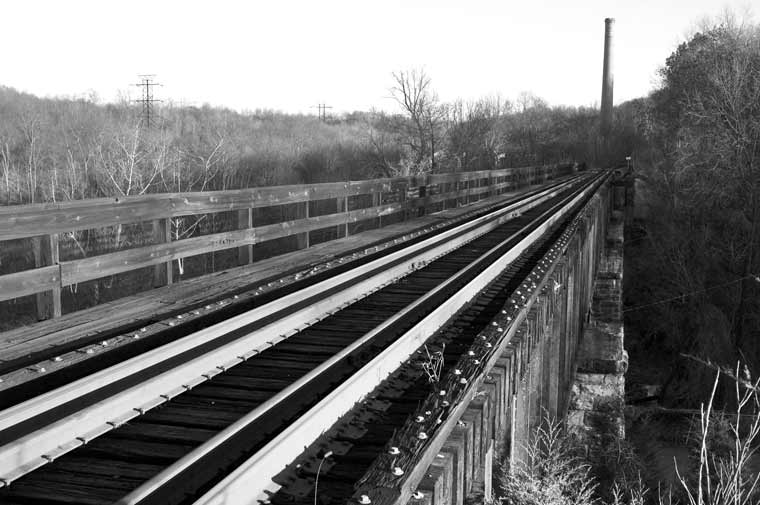
Pictured above, railroad bridge crossing Moores Creek from the shoulder of Pireus to the base of Monticello.
The spirited interest of Albemarle County people arose primarily from the consideration that the mill was one of the few local means of bringing money into the area. Not only in Charlottesville but in surrounding cities this fact was appreciated. Public support found ready expression in newspapers of the day. The mill stood forth as a symbol of a new industrialism. Again and again its success was heralded as proof' of the advantages offered by Charlottesville for factories of all sorts. In a vital sense, the mill belonged to the people; its achievements became the achievements of the community.--Harry Poindexter
We are currently labeling 1059 4x6" prints for delivery to the Virginia Department of Historic Resources. While the County of Albemarle and the City of Charlottesville have been somewhat slow to recognize the value of the historic resources extant in the Woolen Mills village, the State has been extremely supportive as we pursue recognition for this community of workers who contributed mightily to the Commonwealth for one-hundred years.
Labels: Monticello, Moore's Creek, Poindexter History, railroad
Monday, October 29, 2007
free from shoddy
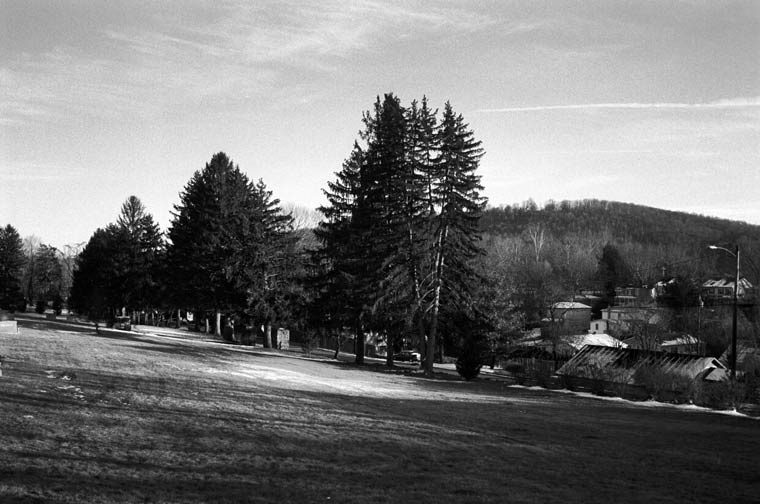
notch in the trees on the mountaintop, the site of Monticello. Poplar tree at mid distance is located in Clay Marchant's backyard. The mill worker housing visible in this photo built in the 1890's. Photo taken from Riverview cemetery.
Happily, Marchant hurried home to begin production, pausing in Baltimore to purchase some minor items on credit. A factory building forty-five feet square with a basement and two upper floors was quickly constructed, and as the machinery arrived it was installed in the new plant. Besides the old roll cards, Marchant now had a set of manufacturing cards, two hand jacks with 210 spindles each, nine narrow Crompton looms, a fulling mill, and other intermediate and finishing machinery. Before the fall of 1868 "a very superior line of goods of all grades up to a fine Doe Skin Cassimer (free from shoddy)" flowed from the mill. Patterson and Shreve, the exclusive selling agents, enthusiastically boasted that Marchant's fabrics were "not surpassed by any of the northern factories...." This cloth was offered to merchants at Baltimore prices. The livelihood of some fifty persons depended on how well it was received.--Harry Poindexter
Labels: Monticello, Poindexter History, Riverview Cemetery
Friday, October 26, 2007
he plotted his course
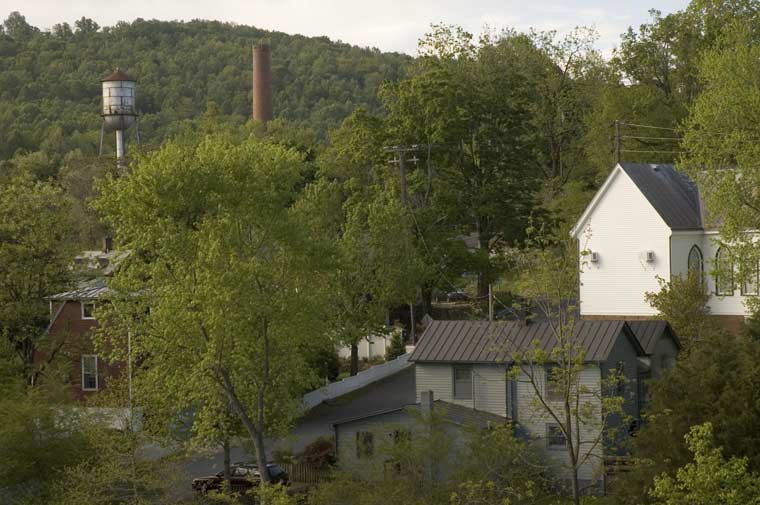
eastern end of the Woolen Mills village, Monticello in the background
Marchant's decision to rebuild the textile mill was undoubtedly influenced by the impressive prosperity of the Northern wool manufacture. Under the nourishment of war-induced demands Northern woolen factories were becoming lusty and aggressive. In 1859 there had been 1,260 mills in that region having an annual production of $61,800,000. By 1869, the number of establishments swelled to 2,891 with a yearly output worth more than twice the previous figure. Additional machinery was rushed into place and a longer working day appeared. In part this boom was due to the prospects for a new protective tariff. Basically the activity was unsound, and after 1867 a three-year depression crippled many a vigorous firm. But in 1865 expansion was the keynote which Marchant observed and under its influence he plotted his course.--Harry Poindexter
Labels: Monticello, Poindexter History
